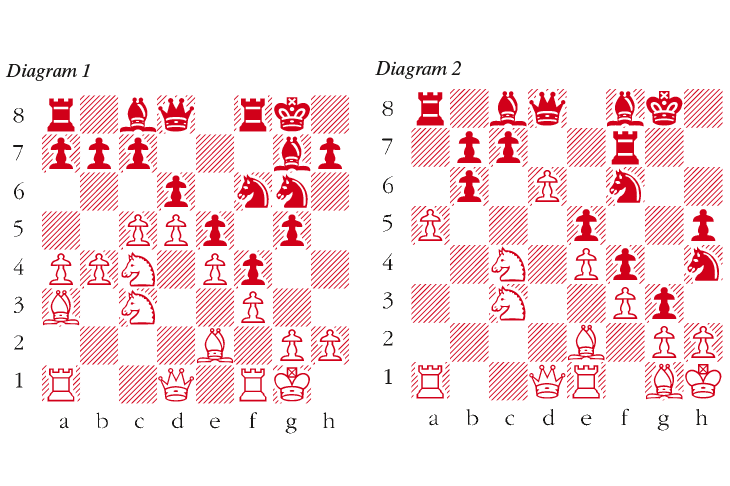Last week I focused on the games and somewhat tragic career of the ingenious David Bronstein. Before his time the King’s Indian Defence was viewed with a certain degree of suspicion, not least because of the early and gigantic concessions it makes to White in terms of occupation of central terrain. It was Bronstein who resurrected and then espoused that previously neglected defence, paving the way for later practitioners, such as Tal, Fischer and Kasparov. Nowadays,the KID has become one of the main highways of opening theory, along which both grandmaster and neophyte may travel, secure in the knowledge that the defence is essentially sound.
A new book, The King’s Indian Defence: Move by Move (Everyman Chess) by Sam Collins brings the theory of this opening fully up to date. Here is a game with notes based on those from the book.
Gelfand-Nakamura; Bursa 2010; King’s Indian Defence
1 d4 Nf6 2 c4 g6 3 Nc3 Bg7 4 e4 d6 5 Nf3 0-0 6 Be2 e5 7 0-0 Nc6 8 d5 Ne7 9 Nd2 Ne8 10 b4 f5 11 c5 Nf6 A direct approach, aiming to force f2-f3 so that the kingside pawns can be set in motion. 11 … Kh8 is also possible. 12 f3 f4 13 Nc4 g5 14 a4 Ng6 15 Ba3 White can also play more directly with 15 cxd6 cxd6 16 Nb5. (diagram 1) 15 … h5 Nakamura crushed another expert of the Classical Variation, Alexander Beliavsky, after 15 … Rf7 16 a5 h5 17 b5 dxc5 18 b6 g4 19 bxc7 Rxc7 20 Nb5 g3 21 Nxc7 Nxe4 22 Ne6 Bxe6 23 dxe6 gxh2+ 24 Kxh2 Qh4+ 25 Kg1 Ng3. 16 b5 dxc5 17 Bxc5 Rf7 18 a5 g4 19 b6 g3 20 Kh1 Bf8 A logical move – the c5-bishop is perhaps White’s best piece and worth exchanging, plus the second rank is cleared for the black rook. 21 d6 21 Bg1 is very logical, when Black can try 21 … Nh4! and if 22 Re1, he has the stunning 22 … Nxg2!! 23 Kxg2 Rg7 24 Nxe5 gxh2+ 25 Kh1 Nxe4! and White resigned in Roozmon-Charbonneau, Montreal 2008. 21 … axb6 22 Bg1 Nh4 23 Re1 A logical move, preparing to shore up the kingside with Bf1, but also a big error. 23 hxg3 is better. (diagram 2) 23 … Nxg2!! Exposing the white king and setting off a stunning tactical sequence. 24 dxc7 White should have tried 24 Kxg2, although his position remains uncomfortable after 24 … Rg7. 24 … Nxe1 Perhaps Gelfand overlooked this simple but beautiful idea – White is two queens up but mated by a lowly pawn after 25 cxd8Q g2 mate. 25 Qxe1 g2+ Again the most precise, even better than 25 … Qxc7 (which was also very good for Black). 26 Kxg2 Rg7+ 27 Kh1 Bh3!! The same theme, but in a stunning second edition. 28 Bf1 Qd3 29 Nxe5 Bxf1 30 Qxf1 Qxc3 31 Rc1 Qxe5 32 c8Q Rxc8 33 Rxc8 Qe6 White resigns A fabulous game by Nakamura, and a wonderful advertisement for Black’s chances in this utterly chaotic variation.





Comments